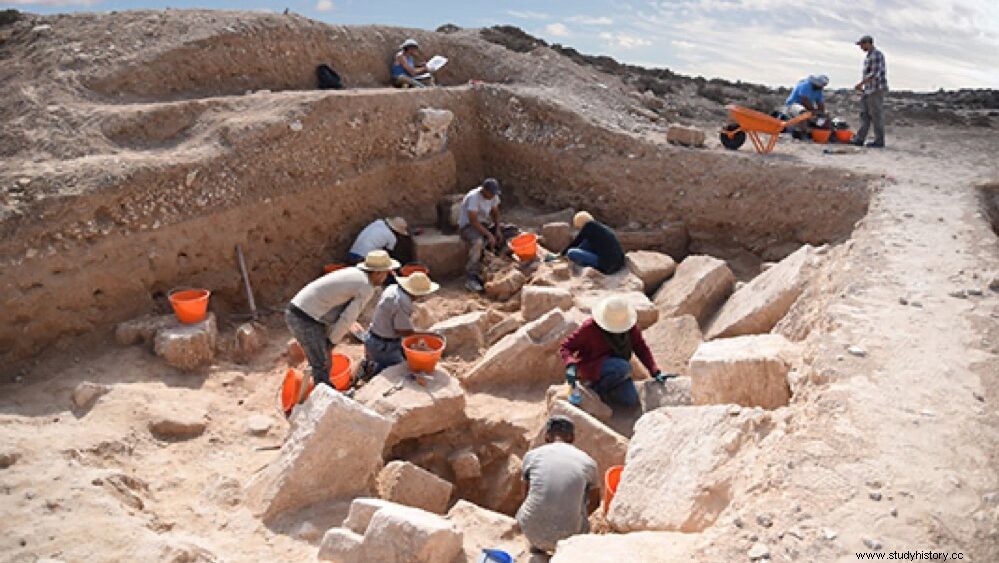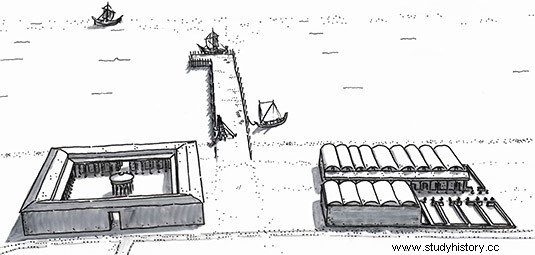A German-Tunisian team co-led by LMU (Ludwig Maximilian University of Munich) archaeologist Stefan Ritter has inspected the ancient city of Meninx southeast of the island of Jerba, near the modern city of Henchir El Kantara in Tunisia, and has rebuilt its trade links in ancient times.

The port of Meninx was unusually situated and well protected. Arriving ships had to first pass through a deep and wide underwater channel in the otherwise shallow bay before approaching the city by another channel that ran parallel to the shoreline for much of its length.
They then had to traverse a wide stretch of shallow water to reach the town's wooden and stone piers, which stretched out to sea from the beach.
From these docks, longshoremen could easily unload cargoes and transport them to nearby warehouses. We know all this thanks to the work of LMU archaeologist Stefan Ritter and his team, which has allowed them to reconstruct the Meninx port facilities on the island of Jerba, off the coast of North Africa. The city was an important commercial center at the time of the Roman Empire, and had commercial links with many other regions of the Mediterranean.

In the course of a DFG-funded project that lasted until the end of 2019, Ritter, together with his colleague Sami Ben Tahar (Institut National du Patrimoine, Tunisia) and a joint German-Tunisian team, has studied and explored the remains of Meninx and its port facilities.
With the help of magnetometric surveys, the researchers were able to map the very unusual layout of the city, whose main streets ran parallel to the coastline. Furthermore, based on their cartographic data, they conducted exploratory excavations at certain temples and shrines, as well as commercial and residential buildings. We even discovered a well-preserved private bathhouse, dating back to Roman imperial times, which included mosaic floors, splendid wall paintings and a number of statues , explains Ritter.

Based on his findings, Ritter and his collaborators believe that the city's prosperity rested in large part on a single product:purple dye, which was obtained from the sea snail Murex trunculus . We have good reason to believe that the Meninx purple dye was not exported as such, but was used locally to dye textiles, which were then sold further afield Ritter says. The material, which was highly valued, was apparently exported all along the Mediterranean coast and beyond. In exchange, the Meninx people imported food, wine, fine domestic pottery, and marble from Italy, Spain, Greece, Asia Minor, and Egypt.
The settlement was founded in the 4th century BC, when the Carthaginians were still the dominant force in the area. It reached its zenith in the period between the 1st and 3rd centuries AD, when Imperial Rome was at its height and Meninx had its own theater and was adorned with other imposing urban structures.

Due to its location on the shores of a shallow bay, it was relatively well protected from attack. However, the port itself was accessible through underwater channels that could only be navigated with the help of local pilots, according to Ritter.
The underwater investigations, carried out by the Bavarian Society for Underwater Archaeology, not only uncovered traces of the original port facilities and the difficult passage to the quays, but also brought to light a number of shipwrecks and quay remains.
Together with their Tunisian colleagues, the LMU archaeologists now plan to expand their investigations on Jerba as part of a more comprehensive comparative study of the region's ancient heritage.
